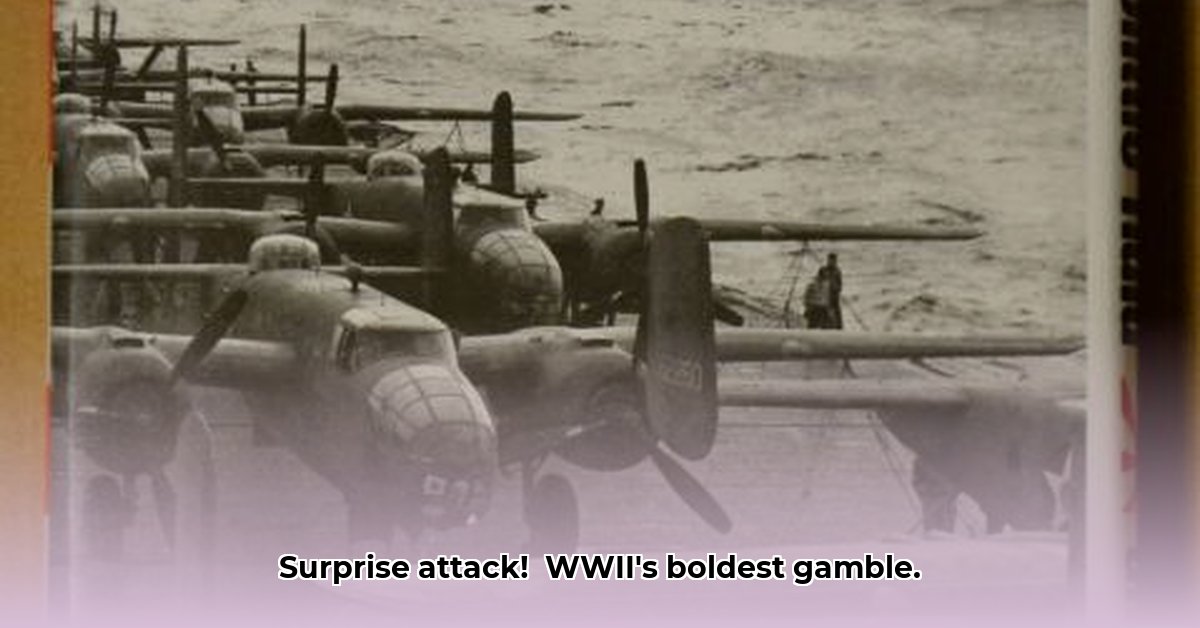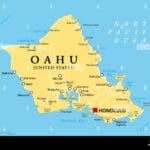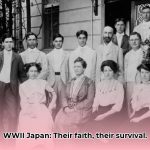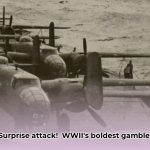The attack on Pearl Harbor in December 1941 plunged America into a state of shock and ignited a fierce desire for retribution. In the spring of 1942, just months after that devastating blow, a daring mission was launched: the Doolittle Raid. Similar feats of wartime communication were crucial, like the work of Navajo Code Talkers. Sixteen B-25 Mitchell bombers, launched from the deck of an aircraft carrier in the Pacific, struck targets in Japan, delivering a powerful message of defiance and resolve. While the raid’s military impact was limited, its psychological and strategic consequences were profound, marking a turning point in World War II. This is the story of the Doolittle Raid: its audacious planning, the perilous mission itself, and its far-reaching impact.
Planning the Impossible: Retaliation After Pearl Harbor
The attack on Pearl Harbor on December 7, 1941, was a watershed moment in American history. The surprise assault crippled the US Pacific Fleet and galvanized public opinion in favor of war. President Franklin D. Roosevelt and his military advisors knew that a swift and decisive response was needed, not only to retaliate for the attack but also to bolster American morale and demonstrate to the world that the United States would not be intimidated.
The challenge was immense. Japan’s island empire stretched across the Pacific, seemingly impregnable. Conventional bombing raids from land-based airfields were out of the question due to the vast distances involved. The solution came from an unlikely source: Captain Francis Low, a submarine officer, who proposed launching medium bombers from an aircraft carrier. It seemed impossible, but the idea took hold.
Lieutenant Colonel James “Jimmy” Doolittle, a renowned aviator and engineer, was selected to lead the mission. Doolittle was a man of exceptional skill, courage, and vision. He immediately recognized the potential of Low’s idea and set about turning it into reality.
The plan was audacious in its simplicity: sixteen B-25B Mitchell bombers would be launched from the aircraft carrier USS Hornet, strike military and industrial targets in Japan, and then fly on to land at airfields in China. The mission was fraught with risk. The B-25 was a medium bomber, not designed for carrier operations. The flight would be long and hazardous, over vast stretches of ocean. And the crews would be operating in enemy territory, far from any hope of rescue.
To prepare for the mission, Doolittle and his team made significant modifications to the B-25s. Auxiliary fuel tanks were added to extend their range, and non-essential equipment was removed to lighten their load. Crews trained intensively, practicing short takeoffs and low-level flying.
The USS Hornet, under the command of Captain Marc Mitscher, was modified to accommodate the B-25s. The carrier’s flight deck was cleared, and special equipment was installed to assist with the launch. The Hornet sailed from San Francisco in early April 1942, carrying the sixteen bombers and their crews toward their rendezvous with destiny.
The Raid: Bravery in the Skies
On April 18, 1942, the Hornet was steaming through the Pacific Ocean, approximately 650 nautical miles (1,200 km) east of Japan. The task force encountered a Japanese picket boat, the Nitto Maru, which radioed a warning to the Japanese mainland. Although the Nitto Maru was quickly sunk by the cruiser USS Nashville, the element of surprise had been compromised.
Doolittle made a fateful decision: the raid would launch immediately, even though the bombers were still further from Japan than planned. The extra distance would put a strain on fuel reserves, but Doolittle believed that delaying the mission would only increase the risk.
At 08:20 Tokyo time, Doolittle led the first B-25B down the flight deck of the Hornet. One by one, the remaining fifteen bombers followed, each lifting off into the wind and setting course for Japan.
The bombers flew low, just above the waves, to avoid detection by Japanese radar. They approached their targets undetected, arriving over Tokyo, Yokohama, Nagoya, and Kobe in the early afternoon.
The raid caught the Japanese completely by surprise. Air raid sirens wailed belatedly as the B-25s dropped their bombs on factories, oil storage facilities, and military installations. The damage was relatively light, but the psychological impact was immense. For the first time, the Japanese people realized that their homeland was vulnerable to attack.
After bombing their targets, the Doolittle Raiders turned westward, toward China. The flight was long and arduous, and many of the bombers were running low on fuel. As darkness fell, one bomber diverted to the Soviet Union, while the remaining fifteen attempted to reach airfields in China.
Tragically, most of the bombers ran out of fuel before reaching their destinations. Crews were forced to bail out over eastern China, relying on the help of Chinese civilians and soldiers to evade capture.
Of the eighty crew members who participated in the raid, sixty-nine survived and eventually returned to the United States. Eight were captured by the Japanese. Three were executed, one died in captivity, and four were liberated at the end of the war.
Strategic Impact and Lasting Legacy
While the Doolittle Raid inflicted limited physical damage on Japan, its strategic and psychological consequences were far-reaching.
The raid provided an enormous boost to American morale. In the dark days following Pearl Harbor, the Doolittle Raid offered a glimmer of hope, demonstrating that the United States could strike back at Japan. Newspapers hailed the raiders as heroes, and the public celebrated the mission as proof that America would ultimately prevail.
In Japan, the raid had a profound impact on military strategy. The attack exposed vulnerabilities in Japan’s air defenses, forcing the military to divert resources from offensive operations to homeland defense.
The Doolittle Raid also influenced Japan’s decision to attack Midway Island. Admiral Isoroku Yamamoto, the commander of the Japanese fleet, believed that capturing Midway would draw the American carriers into a decisive battle, eliminating the threat of future raids on Japan. The Battle of Midway, which took place in June 1942, proved to be a turning point in the Pacific War. The American victory at Midway halted Japan’s advance and shifted the balance of power in the Pacific.
The Doolittle Raid had a profound impact on the Chinese people. Chinese civilians and soldiers risked their lives to help the downed airmen, providing them with food, shelter, and medical care. However, their actions came at a terrible cost. In retaliation for the assistance given to the Americans, the Japanese launched a brutal campaign of terror in eastern China, killing an estimated 250,000 civilians.
The Doolittle Raid remains a controversial topic in historical circles. Some historians argue that the raid was a reckless gamble that achieved little of strategic value, while others emphasize its psychological impact and its role in shaping Japanese military strategy.
Regardless of these debates, the Doolittle Raid stands as a testament to the courage, ingenuity, and determination of the American military. It was a bold and audacious undertaking that lifted American morale, shook Japanese confidence, and helped to turn the tide of the Pacific War. The legacy of the Doolittle Raid continues to inspire generations of Americans, reminding them that even in the face of adversity, courage and resilience can prevail.
The Human Cost: Chinese Civilian Reprisals
The Doolittle Raid’s narrative is incomplete without acknowledging the devastating repercussions endured by Chinese civilians who aided the downed American airmen.
A Debt of Gratitude, A Price of Blood
Following the raid, most of the B-25 crews crash-landed or bailed out over Japanese-occupied China. There, they were met with extraordinary acts of bravery and compassion from Chinese civilians, who, at great personal risk, provided food, shelter, and safe passage. These acts of humanity, however, triggered a brutal and merciless response from the Japanese military.
Retribution Unleashed: The Zhejiang-Jiangxi Campaign
In an attempt to punish the Chinese population for aiding the American airmen, the Japanese launched the Zhejiang-Jiangxi Campaign, a scorched-earth operation that targeted villages and towns suspected of harboring or assisting the Doolittle Raiders. The campaign, which lasted for several months, was characterized by unspeakable atrocities, including massacres, torture, rape, arson, and the deliberate spread of disease.
Estimates of the number of Chinese civilians killed during the Zhejiang-Jiangxi Campaign range from 200,000 to 250,000. Countless others were left homeless, injured, or traumatized. The campaign stands as a stark reminder of the brutal realities of war and the devastating consequences of collective punishment.
A Legacy of Suffering
The story of the Chinese civilians who suffered during the Zhejiang-Jiangxi Campaign is often overlooked in accounts of the Doolittle Raid. It is a story of immense suffering and sacrifice that deserves to be remembered and honored. The Doolittle Raid: Chinese Civilian Reprisals serves as a reminder of the human cost of war and the importance of acknowledging the suffering of all victims, regardless of their nationality or affiliation.
The Soviet Union’s Ambiguous Role
The Soviet Union’s involvement in the Doolittle Raid’s aftermath presents a complex and often overlooked chapter in the story.
Neutrality Tested
One of the Doolittle B-25s, piloted by Captain Edward York, was forced to land in the Soviet Union near Vladivostok due to fuel shortages. At the time, the Soviet Union maintained a neutrality pact with Japan, making the situation delicate.
Internment and a Calculated Blind Eye
Initially, the Soviets interned York and his crew. However, their position was complicated by the fact that they were receiving significant Lend-Lease aid from the United States to fight against Nazi Germany. Openly assisting the Americans could jeopardize their neutrality agreement with Japan, but alienating the US could jeopardize the flow of vital supplies.
After several months of “internment,” the Soviets subtly facilitated the crew’s “escape” across the border into Iran, which was then under British control. This allowed the Soviets to maintain a facade of neutrality while indirectly assisting the American war effort.
Lingering Questions
The exact extent of Soviet complicity in the Doolittle Raiders’ escape remains a matter of debate among historians. Some argue that the Soviets merely turned a blind eye, while others suggest that they actively assisted the crew’s departure. Regardless of the level of involvement, the incident highlights the complex geopolitical calculations that shaped the course of World War II. The Doolittle Raid: Soviet Union’s Role in Crew Escape and Covert Operations serves as a reminder that even during times of war, nations often pursue their own interests through ambiguous and sometimes contradictory actions.
- Discover the best books on ancient Roman history: Expert recommendations for all levels - August 6, 2025
- Why is the Sky Blue? The Simple Answer: Atmospheric Optics Revealed - August 6, 2025
- Unlock Ancient History Books: New Discoveries, 2025 - August 6, 2025
















